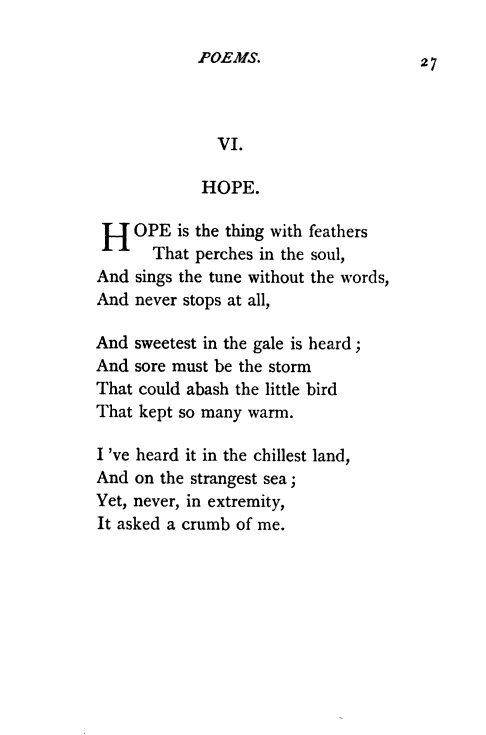Hi, Friend! Jen Glantz here. I’m a bestselling author, the first ever bridesmaid for hire and have been hired by hundreds of brides all over the world. Let’s talk about figure of speech poem examples.
According to Grammarly, figures of speech are found in everyday language, with some appearing so frequently we don’t even notice them. I remember the first time I truly understood this – I was reading a poem about loneliness “knocking on doors” and suddenly realized I’d been using personification my entire life without knowing it. That moment opened up a whole new world of literary appreciation for me.
Add poetic brilliance to your big day with the AI Wedding Speech Generator
Poetry serves as the perfect playground for exploring figurative language because poets deliberately craft each word to create maximum impact. When you understand how these devices work in poems, you’ll start recognizing them everywhere – from song lyrics to everyday conversations.
TL;DR
- Figure of speech poem examples demonstrate how poets transform ordinary language into memorable, impactful communication through specific literary devices
- The 25 examples span five main categories: comparison-based figures, personification, sound devices, exaggeration techniques, and symbolism
- Each example has been selected for educational value, literary quality, practical application, and technical clarity
- Classic poems by Frost, Dickinson, and Poe provide timeless examples, while contemporary pieces show modern applications
- Understanding these devices helps you recognize figurative language in everyday communication, not just poetry
- The examples range from simple identification exercises to complex analytical challenges suitable for different skill levels
Quick Resources:
-
AI Wedding Speech Generator – Add poetic flair to your wedding toast
-
Wedding Vow Generator – Craft emotional, figurative vows
-
Maid Of Honor Speech Generator – Write a meaningful and literary speech
-
All Wedding Tools – Discover every creative wedding and speech tool
What Makes a Great Figure of Speech Poem Example
Effective figure of speech poem examples must balance multiple criteria to serve educational purposes while maintaining artistic integrity. The selection process involves evaluating accessibility for target audiences, teaching potential for specific literary devices, contemporary relevance, artistic merit, emotional impact, memorability, versatility across contexts, complexity range for different skill levels, cultural sensitivity, clear device identification, layered meanings, and contextual appropriateness.
Selection criteria must prioritize clear demonstration of the specific figure of speech without requiring extensive background knowledge. This ensures students can identify and understand the device immediately. Quality assessment involves examining both surface accessibility and deeper analytical potential, allowing the same example to work for introductory identification exercises and advanced literary analysis.
When planning meaningful celebrations, understanding the power of language becomes essential. Whether you’re crafting meaningful wedding vows from her to him or analyzing poetry, the same principles of effective communication apply.
Create vows that speak like poetry with our Wedding Vow Generator
| Selection Criteria | Beginner Level | Intermediate Level | Advanced Level |
|---|---|---|---|
| Device Clarity | Obvious, single device | Multiple devices, clear | Complex layering |
| Vocabulary | Simple, familiar words | Moderate complexity | Sophisticated language |
| Cultural Context | Universal themes | Some background needed | Rich cultural knowledge |
| Analysis Depth | Surface identification | Pattern recognition | Deep interpretation |
| Teaching Applications | Direct instruction | Group discussion | Independent analysis |
Understanding the Five Main Categories
Figure of speech examples organize into five primary categories that serve distinct communicative functions in poetry. Comparison-based figures create vivid imagery through metaphors and similes, personification brings life to inanimate objects and abstract concepts, sound devices establish rhythm and auditory appeal, exaggeration techniques emphasize through overstatement or understatement, and symbolism uses concrete images to represent deeper meanings.
Each category employs different cognitive processes – comparison figures activate visual imagination, personification engages empathy, sound devices appeal to auditory processing, exaggeration manipulates emotional response, and symbolism requires cultural knowledge interpretation. Understanding categorical distinctions helps readers recognize when poets combine multiple device types within single poems, creating layered effects that work simultaneously on different levels.
These types of figurative language work together to create rich, memorable poetry. Figurative speech appears in countless combinations throughout literature, making recognition skills essential for full appreciation.
Consider how a single line can demonstrate multiple categories: “The angry ocean roared its thunderous song” contains personification (angry ocean), onomatopoeia (roared), and metaphor (thunderous song). This layering creates richer meaning than any single device could achieve alone.
1. “The Road Not Taken” by Robert Frost – Extended Metaphor
Frost’s masterpiece uses life as an extended metaphor for a journey with diverging paths, where the speaker reflects on choosing between two roads in a wood. The metaphor sustains throughout the entire poem, with each element – roads, traveler, fork, undergrowth – corresponding to aspects of life choices and their consequences, making abstract decision-making concrete and relatable.
The extended metaphor structure demonstrates how a single comparison can carry an entire poem’s meaning, with every detail supporting the central comparison between life and a journey. Educational value remains high because the metaphor uses familiar imagery (roads, walking, choosing directions) that readers immediately understand while offering deeper analytical layers about life decisions.
This figure of speech works so effectively because we’ve all faced crossroads in our lives, both literal and metaphorical.
2. “A Red, Red Rose” by Robert Burns – Classic Simile
Burns creates vivid imagery by comparing love to nature’s beauty through the direct simile “O my Luve is like a red, red rose / That’s newly sprung in June.” The comparison uses “like” to create clear identification of the simile structure while demonstrating emotional resonance through simple yet powerful language that has endured for centuries.
The simile’s effectiveness comes from connecting abstract emotion (love) to concrete, universally beautiful imagery (fresh roses in peak season). High accessibility makes this perfect for introductory lessons, though cultural context may require explanation of Scottish dialect for modern readers.
This figure of speech remains one of the most quoted examples in English literature because it captures the intensity and beauty of romantic love through natural imagery.
3. Contemporary Mixed Metaphor Example
Modern poetry often deliberately combines contrasting metaphorical elements to create complex imagery, as seen in “Her voice was velvet thunder, / A storm wrapped in silk, / Lightning that whispered secrets.” This technique intentionally mixes soft and harsh elements to demonstrate how contemporary poets push traditional boundaries.
Mixed metaphors challenge traditional rules by combining seemingly incompatible comparisons (velvet/thunder, storm/silk) to create unique artistic effects. The technique requires advanced understanding to appreciate how contradictory elements can work together rather than cancel each other out.
4. “Hope is the thing with feathers” by Emily Dickinson – Conceptual Metaphor
Dickinson transforms the abstract concept of hope into a concrete bird image, developing this metaphor by giving hope bird-like qualities throughout the poem. Hope “perches in the soul,” “sings the tune without the words,” and “never stops at all,” making intangible emotions tangible and creating lasting emotional connections with readers.
Conceptual metaphors work by systematically connecting abstract ideas to concrete experiences, allowing readers to understand complex emotions through familiar imagery. The technique’s sophistication lies in maintaining consistency – every aspect of the bird metaphor relates logically to qualities we associate with hope.
This figure of speech demonstrates how poets can make abstract concepts accessible through sustained comparison.
5. Modern Simile Chain Example
Contemporary poets often create layered understanding through multiple similes working together, as demonstrated in “Time moves like honey in winter, / Slow as a sleepy river, / Thick as morning fog.” Each comparison adds another dimension to understanding time’s passage, building cumulative impact through varied imagery.
Simile chains create depth by approaching the same concept from multiple angles, each comparison highlighting different aspects of the subject. The technique works best when each simile contributes unique insight rather than simply repeating the same idea in different words.
6. “The Wind” by Christina Rossetti – Nature Personification
Rossetti gives wind human-like ability to intentionally “pass through” in her poem “Who has seen the wind? / Neither I nor you: / But when the leaves hang trembling, / The wind is passing through.” This personification makes the invisible wind’s presence tangible through its effects on visible objects, creating mystery and presence simultaneously.
Nature personification works by attributing intentional action to natural forces, making environmental phenomena feel purposeful and alive. The technique’s effectiveness comes from focusing on observable effects rather than trying to describe the invisible force directly.
This figure of speech helps readers connect with natural forces by giving them human characteristics we can understand and relate to.
Use personification in your speech with the AI Wedding Speech Generator
7. Contemporary Loneliness Personification
Modern poetry often personifies emotions to make abstract feelings concrete and manageable, as seen in “Loneliness knocked on my door at midnight, / Wearing a coat of rain and sighs. / She sat in my kitchen, / Stirring sugar into bitter tea, / Telling me stories I didn’t want to hear.” This approach transforms overwhelming emotion into a character readers can visualize and understand.
Emotion personification helps readers externalize internal experiences, making difficult feelings easier to examine and discuss. The technique gains power through specific, relatable details (knocking at midnight, sitting in kitchen, stirring tea) that ground abstract emotion in concrete action.
Have you ever felt like sadness was visiting you uninvited? This personification technique makes those experiences feel less isolating.
Capture emotional depth in your toast using the Maid Of Honor Speech Generator
8. “The Lamp” Object Personification
Everyday objects gain human traits and emotions in poems where “The old lamp yawned yellow light / Into corners that had forgotten brightness.” This personification transforms mundane household items into characters with personalities, creating warmth and familiarity in domestic settings while suggesting the lamp’s tiredness and the corners’ forgetfulness.
Object personification creates emotional connections between readers and inanimate things by suggesting these items have feelings and intentions. The technique works particularly well with familiar objects because readers already have emotional associations with these items in their own lives.
9. Time Personification Example
Time becomes a gentle, active character in “Time tiptoes through the garden, / Painting silver in my hair, / Whispering secrets to the roses.” This personification presents time as a careful artist and confidant rather than a destructive force, offering a more comforting perspective on aging and change through delicate imagery.
Time personification helps readers process difficult concepts about mortality and change by presenting time as a character with understandable motivations. The gentle imagery (tiptoes, painting, whispering) creates positive associations with time’s passage rather than fear or anxiety.
10. “Because I could not stop for Death” by Emily Dickinson – Death Personification
Dickinson portrays Death as a courteous gentleman caller who “kindly” stops for the speaker, giving him human characteristics including politeness, the ability to drive a carriage, and civility. This personification transforms the frightening concept of death into something approachable and almost comforting, revolutionizing how readers might view mortality.
Death personification demonstrates how poets can reframe terrifying concepts by giving them familiar, non-threatening human qualities. The technique requires cultural sensitivity when used in educational settings, as different audiences may have varying comfort levels with mortality discussions.
This figure of speech remains one of the most powerful examples of how personification can completely change our relationship with abstract concepts.
11. “The Raven” by Edgar Allan Poe – Alliteration
Poe creates rhythm and emphasis through repeated consonant sounds in “Deep into that darkness peering, long I stood there wondering, fearing.” The repeated ‘d’ and ‘l’ sounds create musical quality while reinforcing the poem’s mood of uncertainty and dread, demonstrating how sound devices support meaning beyond just creating pleasant effects.
Alliteration works by creating sound patterns that emphasize key words and concepts while establishing rhythm that supports the poem’s emotional tone. The technique’s educational value comes from its immediate recognizability – readers can hear the repeated sounds even if they don’t initially understand the literary term.
| Sound Device | Definition | Example | Effect |
|---|---|---|---|
| Alliteration | Repeated initial consonant sounds | “Peter Piper picked” | Creates rhythm, emphasis |
| Assonance | Repeated vowel sounds | “Hear the mellow wedding bells” | Musical quality, mood |
| Consonance | Repeated consonant sounds anywhere | “pitter patter” | Subtle harmony |
| Onomatopoeia | Words that sound like their meaning | “buzz,” “crash,” “whisper” | Sensory experience |
| Internal Rhyme | Rhymes within lines | “Once upon a midnight dreary” | Complex musicality |
Make your speech sound as powerful as it feels with the AI Wedding Speech Generator
12. Modern Assonance Example
Contemporary poetry uses repeated vowel sounds to create musical quality, as demonstrated in “The light bright kites take flight at night.” The repeated long ‘i’ sounds create a sense of soaring and lightness that matches the image of kites flying, showing how sound can reinforce visual imagery and emotional tone.
Assonance creates subtle musical effects that may not be immediately obvious but contribute to the poem’s overall sound and feel. The technique works best when the repeated vowel sounds match or enhance the poem’s meaning rather than existing purely for decorative purposes.
13. “Stopping by Woods” by Robert Frost – Consonance
Frost uses repeated consonant sounds in “The woods are lovely, dark and deep” where the ‘d’ sounds create a somber, contemplative mood that matches the speaker’s reflective state. This consonance technique demonstrates how sound devices can reinforce emotional atmosphere while maintaining natural speech patterns.
Consonance differs from alliteration by focusing on repeated consonant sounds anywhere in words, not just at the beginning, creating more subtle sound effects. The technique’s effectiveness lies in supporting the poem’s mood without drawing attention away from meaning or creating artificial-sounding language.
This figure of speech works so subtly that many readers feel its effect without consciously recognizing the repeated sounds.
Use subtle poetic tools in your vows with our Wedding Vow Generator
14. “The Bells” by Edgar Allan Poe – Onomatopoeia
Poe uses words that imitate actual sounds throughout the poem with “tinkle,” “jingling,” “jangling,” “clanging,” “clashing.” Each section represents different types of bells (silver, golden, brazen, iron) with corresponding sound words that mirror the actual sounds bells make, creating an auditory experience that enhances the poem’s meaning and demonstrates pure onomatopoeia.
Onomatopoeia creates direct sensory experience by using words that sound like what they describe, making poetry more immersive and memorable. The technique’s sophistication appears when sound words carry narrative structure, as different bell sounds represent different life stages or emotional states.
15. Contemporary Internal Rhyme Example
Modern poetry creates additional musicality through rhymes within lines, as seen in “The cat sat on the mat with a splat, / While the bat flew past with a chat.” Internal rhyme adds complexity to traditional rhyme schemes while maintaining playful, accessible language that demonstrates how sound devices can create humor and rhythm simultaneously.
Internal rhyme creates more complex sound patterns than end rhyme alone, adding layers of musicality that can support or contrast with the poem’s meaning. The technique works particularly well in humorous or children’s poetry where the extra rhyming creates bouncy, memorable rhythms.
Practice identifying internal rhyme by reading this line aloud: “I went to town to buy a gown, but found the shop was closed down.” Notice how the rhymes within the line (town/gown/down) create a bouncing rhythm that makes the sentence more memorable than plain prose would be.
16. Extended Hyperbole in Love Poetry
Love poetry often uses impossible exaggeration to express intense emotion, as demonstrated in “I will love thee still, my dear, / Till all the seas gang dry.” This hyperbole emphasizes eternal love through impossible conditions, showing how exaggeration can make abstract emotions feel more concrete and powerful than literal language could achieve.
Hyperbole in love poetry works by making emotions larger than life, helping readers understand the intensity of feelings that might otherwise seem ordinary. The technique’s effectiveness depends on choosing exaggerations that feel emotionally true even when literally impossible.
17. Modern Litotes Example
Contemporary poetry uses understatement for ironic effect, as seen in “The hurricane was not exactly a gentle breeze.” This litotes creates humor and emphasis through deliberate understatement, demonstrating how saying less can actually communicate more by forcing readers to recognize the gap between statement and reality.
Litotes works through ironic contrast between mild language and extreme reality, creating emphasis through understatement rather than overstatement. The technique requires readers to understand the ironic intent, making it more sophisticated than direct hyperbole but potentially more memorable when successful.
18. Contemporary Dramatic Hyperbole
Modern poetry uses multiple hyperbolic statements to express intense emotion in “I’ve told you a million times before, / My heart explodes like supernovas / Every time you walk through that door. / I’d climb ten thousand mountains, / Swim across seven seas, / Just to hear you whisper / My name upon the breeze.” This demonstrates how layered exaggeration can build emotional intensity.
Dramatic hyperbole gains power through accumulation – multiple impossible statements create greater impact than single exaggerations. The technique works best when exaggerations feel emotionally authentic even when literally impossible, maintaining connection between reader and speaker.
19. Subtle Understatement Example
Poetry can create powerful effects through deliberate understatement, as demonstrated in “War is not particularly pleasant, / Death is somewhat inconvenient.” This technique understates tragedy for powerful effect, forcing readers to recognize the enormous gap between mild language and devastating reality, creating lasting impact through contrast.
Subtle understatement creates impact through ironic contrast, where mild language highlights rather than minimizes the severity of situations. The technique requires careful handling in educational settings, as the irony may not be immediately apparent to all readers.
20. Comic Hyperbole Example
Humorous poetry uses exaggeration for comedic effect in “My homework pile is taller than Everest, / My backpack weighs more than an elephant.” This approach demonstrates how hyperbole can create humor while still communicating genuine feelings about overwhelming situations, making the technique accessible and relatable for younger readers.
Comic hyperbole works by choosing exaggerations that are obviously impossible but emotionally relatable, creating humor while validating real feelings. The technique serves educational purposes by making hyperbole non-threatening and memorable, helping students understand the device through enjoyable examples.
21. “The Lamb” by William Blake – Religious Symbolism
Blake uses the lamb as a symbol for innocence, purity, and Christ, representing the gentle, innocent aspect of creation and divine love. The poem’s simple language and repetitive structure mirror the innocence the lamb symbolizes, while religious imagery connects to Christian symbolism of Jesus as the “Lamb of God,” demonstrating how symbols can carry multiple layers of meaning.
Religious symbolism works by connecting concrete images to spiritual concepts, making abstract theological ideas accessible through familiar imagery. The technique requires cultural sensitivity in diverse educational settings, as religious symbols may have different meanings or significance for different audiences.
This figure of speech shows how poets can embed deep spiritual meaning within simple, accessible language.
| Symbol Type | Common Meanings | Poetic Examples | Cultural Considerations |
|---|---|---|---|
| Religious | Spiritual concepts, divine connection | Lamb (innocence), Cross (sacrifice) | Varies by faith tradition |
| Natural | Life cycles, human emotions | Seasons (change), Water (purification) | Generally universal |
| Color | Emotional states, abstract concepts | Red (passion), White (purity) | Cultural variations exist |
| Light/Dark | Knowledge/ignorance, hope/despair | Dawn (new beginning), Night (mystery) | Nearly universal |
| Seasonal | Time passage, life stages | Spring (youth), Winter (death/rest) | Climate-dependent understanding |
22. Contemporary Color Symbolism
Modern poetry uses colors to carry emotional and symbolic weight, as seen in “She wore her sadness like a blue dress, / While hope bloomed yellow in her garden.” This technique demonstrates how color associations can communicate complex emotional states without explicit explanation, relying on shared cultural understanding of color meanings.
Color symbolism relies on cultural associations that may vary between different communities, requiring awareness of audience background and context. The technique works most effectively when color choices feel natural and emotionally appropriate rather than forced or arbitrary.
23. “Nothing Gold Can Stay” by Robert Frost – Seasonal Symbolism
Frost uses spring to symbolize youth and fleeting beauty in “Nature’s first green is gold, / Her hardest hue to hold.” The seasonal imagery represents the temporary nature of precious things, demonstrating how natural cycles can symbolize human experiences and universal truths about change and loss.
Seasonal symbolism works by connecting human experiences to natural cycles that readers universally understand and observe. The technique’s power comes from the inevitability of seasonal change, which mirrors the inevitability of human change and loss.
24. Modern Water Symbolism
Contemporary poetry uses water to represent the flow of time and memory in “The river of memory flows backward, / Carrying childhood boats / Made of newspaper dreams. / Each ripple holds a face, / Each current pulls toward / The ocean of forgetting.” Different water bodies (river, ocean) symbolize different aspects of remembrance and loss, creating a coherent symbolic system.
Water symbolism works through the natural properties of water – flow, depth, clarity, turbulence – that correspond to emotional and psychological states. The technique gains sophistication when different types of water bodies represent different aspects of the same theme, creating extended symbolic networks.
25. Contemporary Light and Dark Symbolism
Modern poetry uses light and darkness to represent hope and despair in “Dawn breaks the spell of midnight thoughts, / Shadows retreat to corners / Where doubt once lived.” This traditional symbolic pairing demonstrates how fundamental contrasts can communicate complex emotional transitions while remaining immediately accessible to readers across cultures.
Light and dark symbolism draws on universal human experiences with day and night cycles, making it one of the most accessible symbolic systems. The technique’s effectiveness comes from its flexibility – light and dark can represent knowledge/ignorance, hope/despair, life/death, or good/evil depending on context.
This figure of speech remains powerful because we all experience the daily cycle of light and darkness, making the symbolic associations feel natural and intuitive.
How These Examples Apply to Real Life
Figurative language skills transfer directly into professional communication, personal relationships, and critical media consumption. Business presentations benefit from strategic metaphor use, personal conversations become more engaging with appropriate personification, and media literacy improves when you recognize hyperbole in advertising or political rhetoric. These poetry analysis skills develop into practical communication tools.
Professional applications include crafting compelling presentations, writing persuasive emails, and creating memorable marketing content that resonates with audiences through figurative language. Personal benefits extend to expressing emotions more effectively, understanding others’ communication styles, and recognizing when figurative language is being used to influence your opinions or purchasing decisions.
Write a professional, poetic wedding toast with the Maid Of Honor Speech Generator
These skills prove invaluable when giving memorable maid of honor speeches or crafting other meaningful wedding communications.
When writing a wedding toast, you might say “Your love story began like a gentle spring rain, nurturing the seeds of friendship until they bloomed into something beautiful.” This combines metaphor (love as growing plants), simile (beginning like rain), and personification (seeds that can bloom), creating memorable imagery that guests will remember long after the celebration ends.
Planning meaningful celebrations often requires the same careful attention to language that poets bring to their craft. Whether you’re writing wedding vows, preparing toasts, or creating ceremony programs, the principles behind effective figurative language can help you communicate your deepest feelings. Bridesmaid for Hire understands this connection between language and meaning, offering services that help couples express their love story through carefully crafted words and thoughtfully planned celebrations that capture the poetry of their relationship.
Explore more ways to personalize your wedding with All Wedding Tools
For couples seeking guidance in expressing their feelings, wedding speech coaching services can help transform ordinary words into memorable, meaningful expressions of love.
Final Thoughts
These 25 figure of speech poem examples demonstrate the incredible power of language to transform ordinary communication into something memorable and impactful. From Frost’s life-as-journey metaphors to contemporary personifications of emotion, each example shows how poets use specific techniques to help us see familiar experiences in new ways.
The beauty of understanding these devices lies in recognizing how they shape all the communication around you. Every time someone says “time flies” or describes a “broken heart,” they’re using figurative language that connects abstract concepts to concrete experiences.
Whether you’re analyzing poetry for academic purposes, improving your own creative writing, or simply wanting to better understand the language that surrounds you daily, these examples provide a solid foundation for recognizing and appreciating the artistry in everyday communication.
For those inspired to apply these techniques in their own special occasions, wedding vow examples showcase how couples successfully incorporate figurative language into their most important promises.
Mastery comes through practice – actively looking for these devices in everything you read and hear will develop your recognition skills and deepen your appreciation for skillful language use. Application extends beyond poetry into all forms of communication, from crafting compelling presentations to writing heartfelt personal messages that truly capture your intended meaning and emotion.
This figure of speech knowledge transforms how you interact with language in every aspect of your life, making you both a more effective communicator and a more appreciative audience for the artistry that surrounds us daily.
1-800-BRIDESMAID
The Newlywed
Card Game
something extra to love
Read the weekly newsletter from Bridesmaid for Hire, 1-800-Bridesmaid, to hear about real stories, from strangers, who need advice on love, life, friendship, and so much more.
Looking for the perfect wedding gift for someone you adore? Grab The Newlywed Card Game. It's a fun and interactive game they can play on their honeymoon or future date nights.





